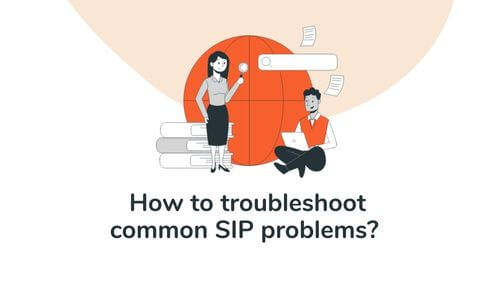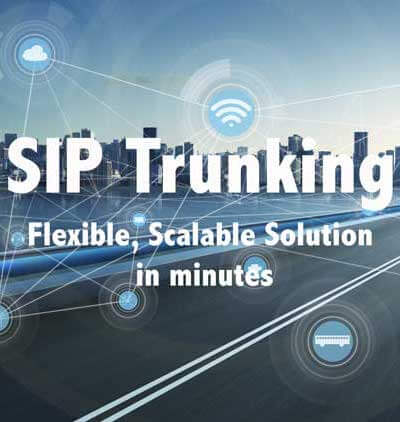How to troubleshoot common SIP problems? SIP, or Session Initiation Protocol, is a popular protocol used for VoIP communications. As with any technology, issues can arise with SIP, which can impact the quality and reliability of your communications. Here are some...
How to troubleshoot common SIP problems?
How to troubleshoot common SIP problems?
SIP, or Session Initiation Protocol, is a popular protocol used for VoIP communications. As with any technology, issues can arise with SIP, which can impact the quality and reliability of your communications. Here are some common SIP problems and troubleshooting steps to help resolve them.
Registration Failure
The first step to resolving registration failure is to ensure that your SIP credentials are correct. Check to make sure that the username and password you’re using are accurate, and that the SIP server IP address is correct. If you’re still experiencing registration failure, try the following steps:
-
- Check the network connection. Make sure that you’re connected to the internet and that there are no issues with your connection.
- Check the SIP server. Check to make sure that the SIP server is up and running. You can do this by contacting your SIP provider or checking their website.
- Check the firewall. If you have a firewall in place, make sure that it’s configured to allow SIP traffic.
No Audio
If you’re experiencing no audio during your SIP call, there are a few things you can try to resolve the issue:
-
- Check your network connection. Make sure that your internet connection is stable and that you’re not experiencing any latency issues.
- Check your codecs. Try changing the codecs to see if that resolves the issue.
- Check the firewall. Make sure that all necessary ports are open for SIP traffic.
One-Way Audio
If you’re experiencing one-way audio during your SIP call, it could be due to NAT traversal issues. Try the following steps to resolve the problem:
-
- Check your NAT device. Make sure that your NAT device is properly configured and that all necessary ports are open for SIP traffic.
- Use a STUN or TURN server. These servers help resolve NAT traversal issues.
- Check your network connection. Make sure that your internet connection is stable and that you’re not experiencing any latency issues.
Call Drops
Call drops can be frustrating, but there are several things you can try to resolve the issue:
-
- Check your network connection. Make sure that your internet connection is stable and that you’re not experiencing any latency issues.
- Check the SIP Trunking provider‘s status page. There could be a known issue with the provider’s network.
- Check your router. Make sure that your router is configured properly and that all necessary ports are open for SIP traffic.
Echoes
The presence of echoes during a SIP call can result from several factors. To rectify this issue, you can attempt several potential solutions.
-
- Check your network connection. Make sure that your internet connection is stable and that you’re not experiencing any latency issues.
- Use a headset. This can help reduce echoes caused by the microphone and speaker being too close to each other.
- Check your network latency. High network latency can cause echoes, so try to reduce your latency as much as possible.
Busy Signals
If you’re encountering busy signals while making a SIP call, you can attempt multiple methods to resolve the problem.
-
- Check your SIP channels. Make sure that you have sufficient SIP channels available.
- Check your firewall. Make sure that your firewall is not blocking SIP traffic.
- Contact your SIP provider. There could be an issue with the provider’s network that they need to resolve.
SIP problems can be caused by a range of issues, but there are steps you can take to resolve them. By following these troubleshooting steps, you can improve the quality and reliability of your SIP communications. Remember to always check your network connection, SIP configuration, and SIP provider’s network status. Additionally, make sure that all necessary ports are open for SIP traffic and that your NAT device is properly configured.
If you’re still experiencing issues after trying these troubleshooting steps, don’t hesitate to contact your SIP provider for further assistance. They may be able to provide additional guidance or support to help resolve the problem.
Overall, with some patience and persistence, most SIP problems can be resolved. By taking the time to troubleshoot and resolve these issues, you can ensure that your SIP communications are reliable, high-quality, and free from interruptions.
Why to manage a phone system
when you can get for free.
New Posts
How to troubleshoot common SIP problems?
Maximizing Reach and Engagement: The Top Benefit of SMS Marketing for Your Agency
Maximizing Reach and Engagement: The Top Benefit of SMS Marketing for Your Agency As a marketing agency, you know that reaching and engaging with your target audience is key to your success. SMS marketing can be a powerful tool to help you achieve this goal. By...
SIP Trunking and Disaster Recovery: Ensuring Business Continuity
SIP Trunking and Disaster Recovery: Ensuring Business Continuity Disasters, whether natural or man-made, can significantly impact a business's operations. They can cause disruptions, lead to financial losses, and even result in the closure of the business. As such,...
Learn more about our Products
Visit SIP Trunking Pricing to see which plan best suits your business!
Our plans have been packaged together to give you optimum output.










